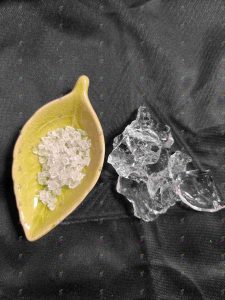What is Potassium Polyacrylate?

Potassium polyacrylate is a polymer that can absorb and retain large amounts of water relative to its own mass. Unlike sodium polyacrylate, potassium polyacrylate releases absorbed water slowly, making it more suitable for agricultural applications. This property makes it invaluable for maintaining soil moisture and enhancing plant growth.
Potassium Polyacrylate Uses in Agriculture
- Soil Moisture Retention: Potassium polyacrylate crystals can absorb water and release it slowly, ensuring a consistent supply of moisture to plants.
- Drought Mitigation: In drought-prone areas, it acts as a reservoir, reducing the frequency of irrigation and conserving water.
- Plant Growth Enhancement: By maintaining optimal moisture levels, potassium polyacrylate helps in the healthy growth of plants, leading to higher yields.
Potassium Polyacrylate vs. Sodium Polyacrylate
While both polymers are used for water absorption, potassium polyacrylate is preferred for agricultural use due to its ability to release water more gradually, which is crucial for plant health. Sodium polyacrylate, on the other hand, releases water more quickly, making it less effective for sustained agricultural applications.
Potassium Polyacrylate Advantages
- Improved Water Efficiency: Reduces the need for frequent watering.
- Enhanced Crop Yields: Provides a steady water supply, promoting better plant growth.
- Soil Health: Helps in maintaining soil structure and reducing erosion.
Potassium Polyacrylate Disadvantages
- Cost: Potassium polyacrylate can be expensive, which may be a barrier for small-scale farmers.
- Environmental Impact: Long-term effects on soil and environment need more research.
Potassium Polyacrylate Availability and Price
Potassium polyacrylate is available for sale from various suppliers. Prices vary depending on the quantity and quality of the product. For the best deals, purchasing in bulk is often more cost-effective.
Potassium Polyacrylate Manufacturing Process
The production of potassium polyacrylate involves the polymerization of acrylic acid and a cross-linking agent, followed by neutralization with potassium hydroxide. This process results in a hydrogel that can absorb and retain water.
Potassium Polyacrylate Safety and Handling (MSDS)
It’s essential to handle potassium polyacrylate with care. The material safety data sheet (MSDS) provides detailed information on the handling, storage, and potential hazards of the polymer.
How to Use Potassium Polyacrylate
- Soil Amendment: Mix the crystals with soil to improve water retention.
- Seed Coating: Coat seeds with the polymer to enhance germination rates.
- Direct Application: Apply directly to the root zone for established plants.
Potassium Polyacrylate vs. Other Polymers
When compared to other superabsorbent polymers, potassium polyacrylate stands out for its agricultural benefits, particularly in terms of water release patterns and compatibility with plant growth.
In summary, potassium polyacrylate is a versatile and beneficial polymer for modern agriculture, offering significant advantages in water retention and plant growth. However, cost considerations and environmental impact should be carefully evaluated. For farmers and agricultural professionals, understanding its properties and applications can lead to more sustainable and productive farming practices.

